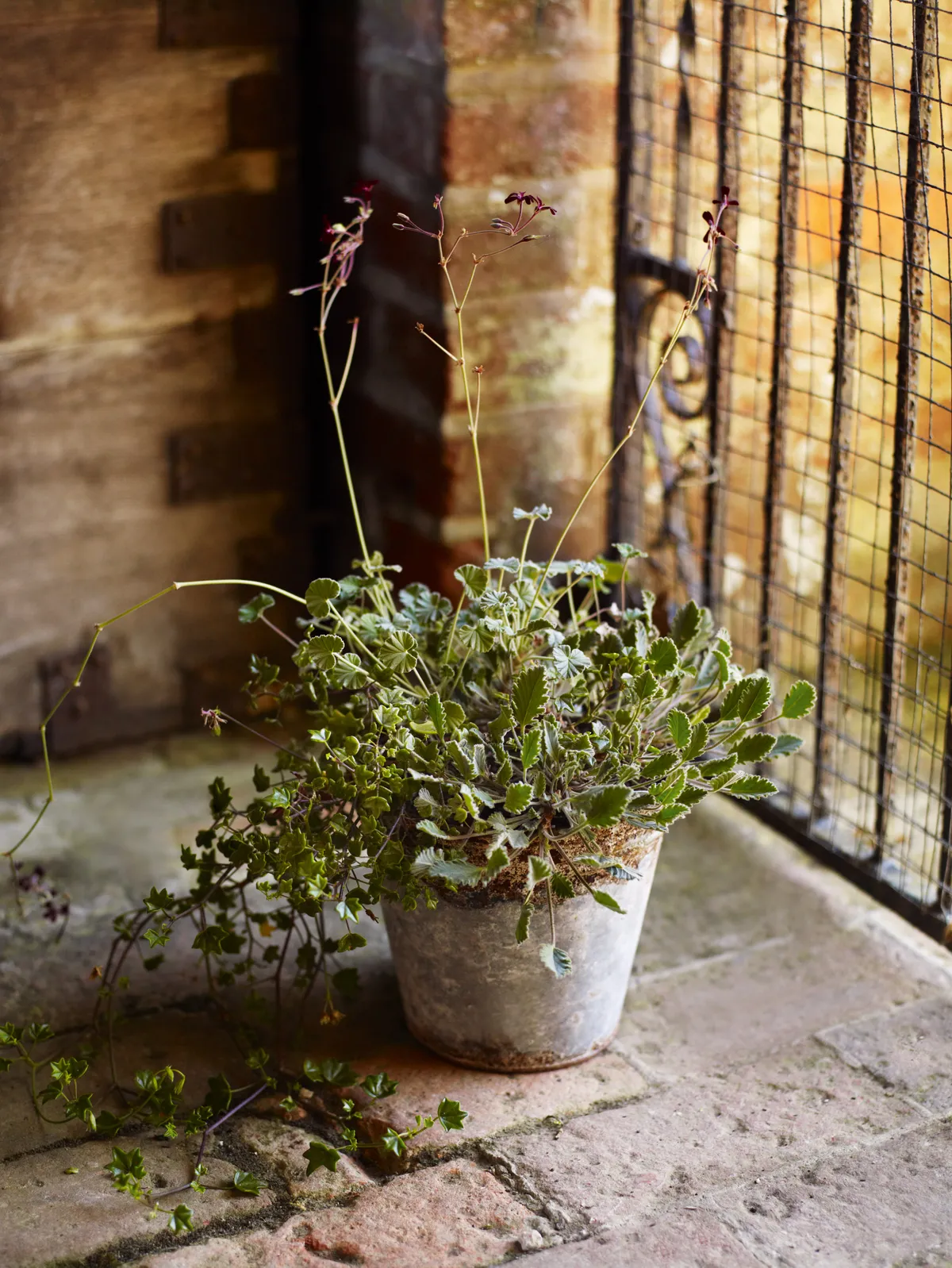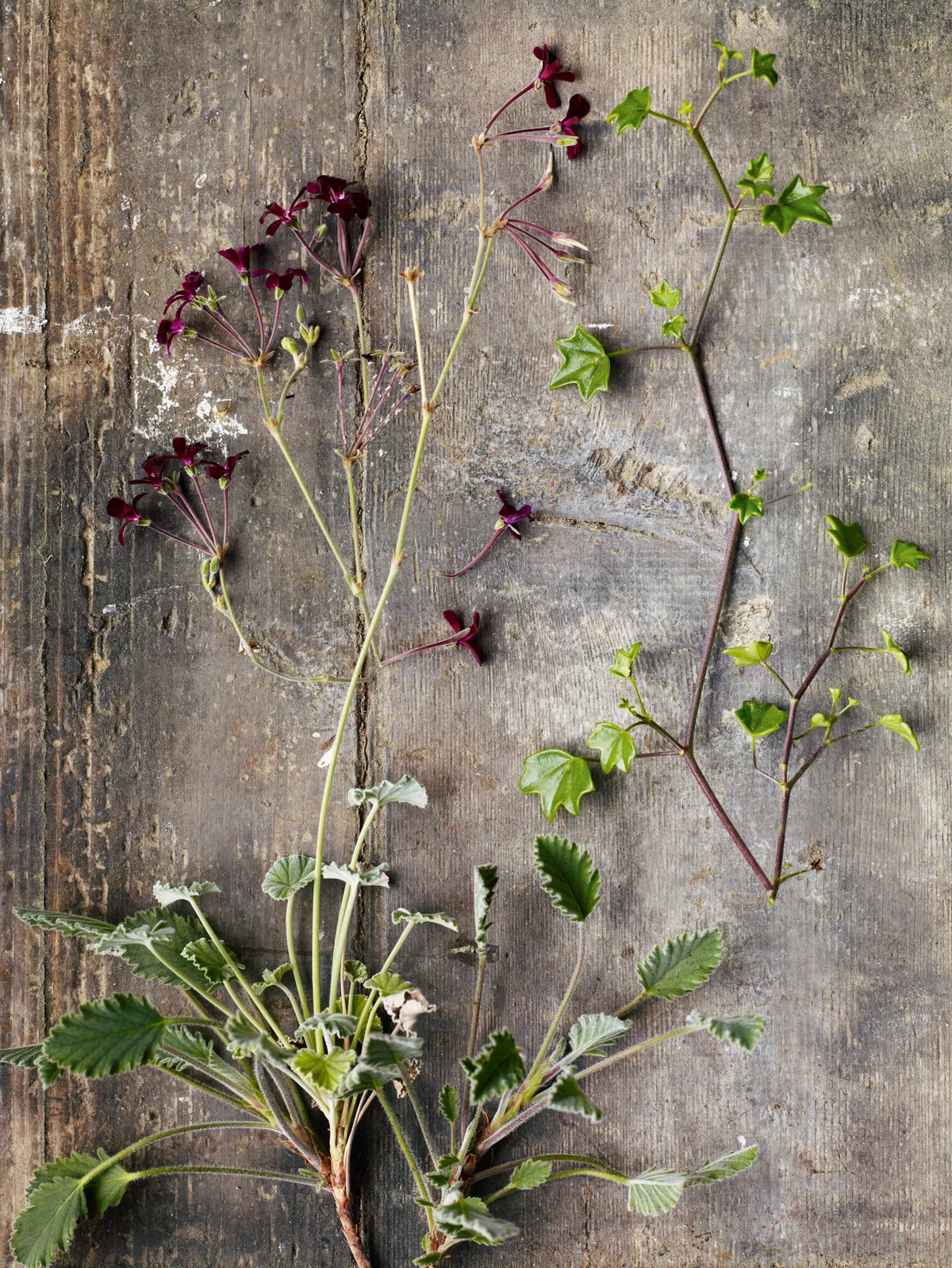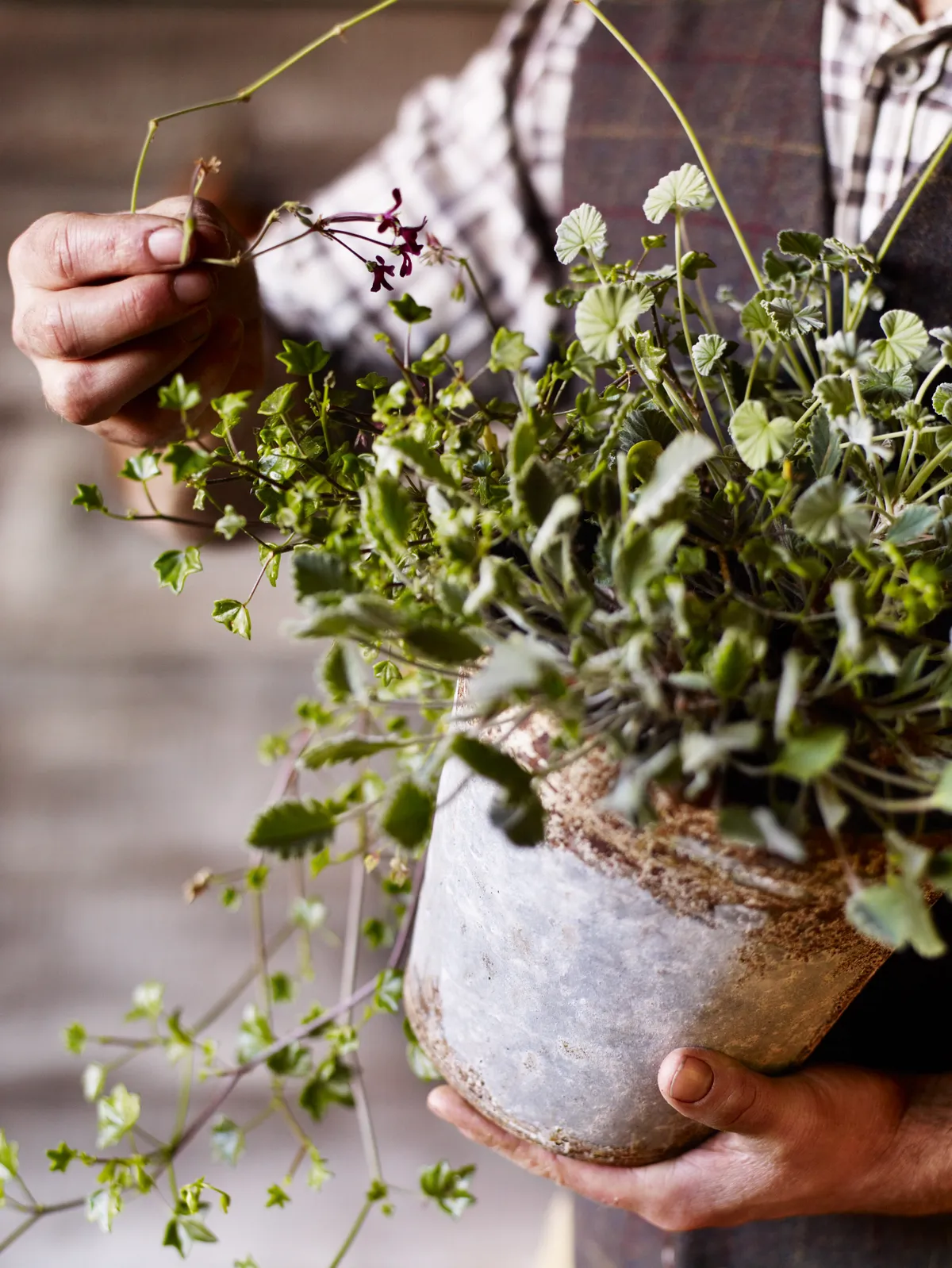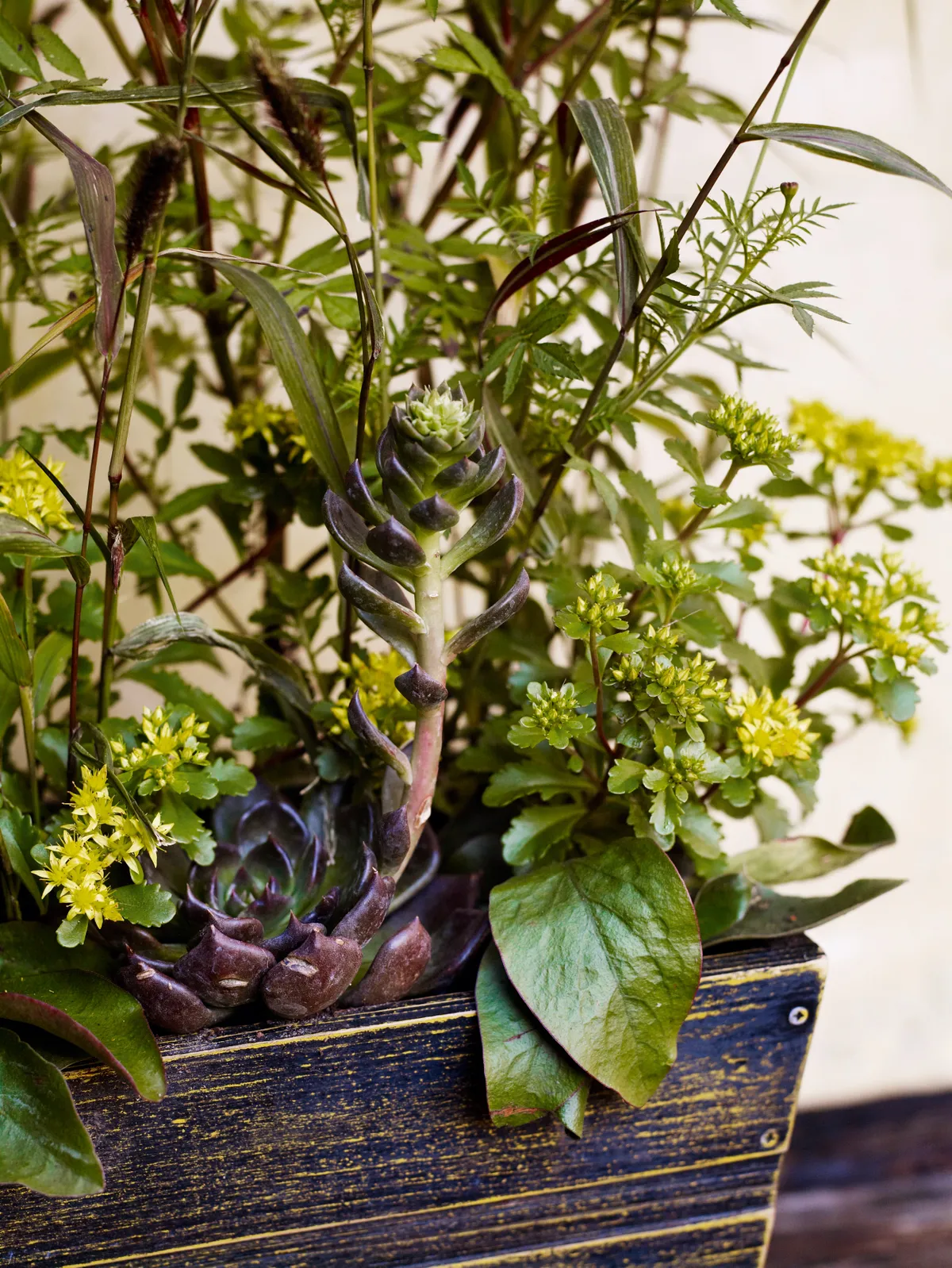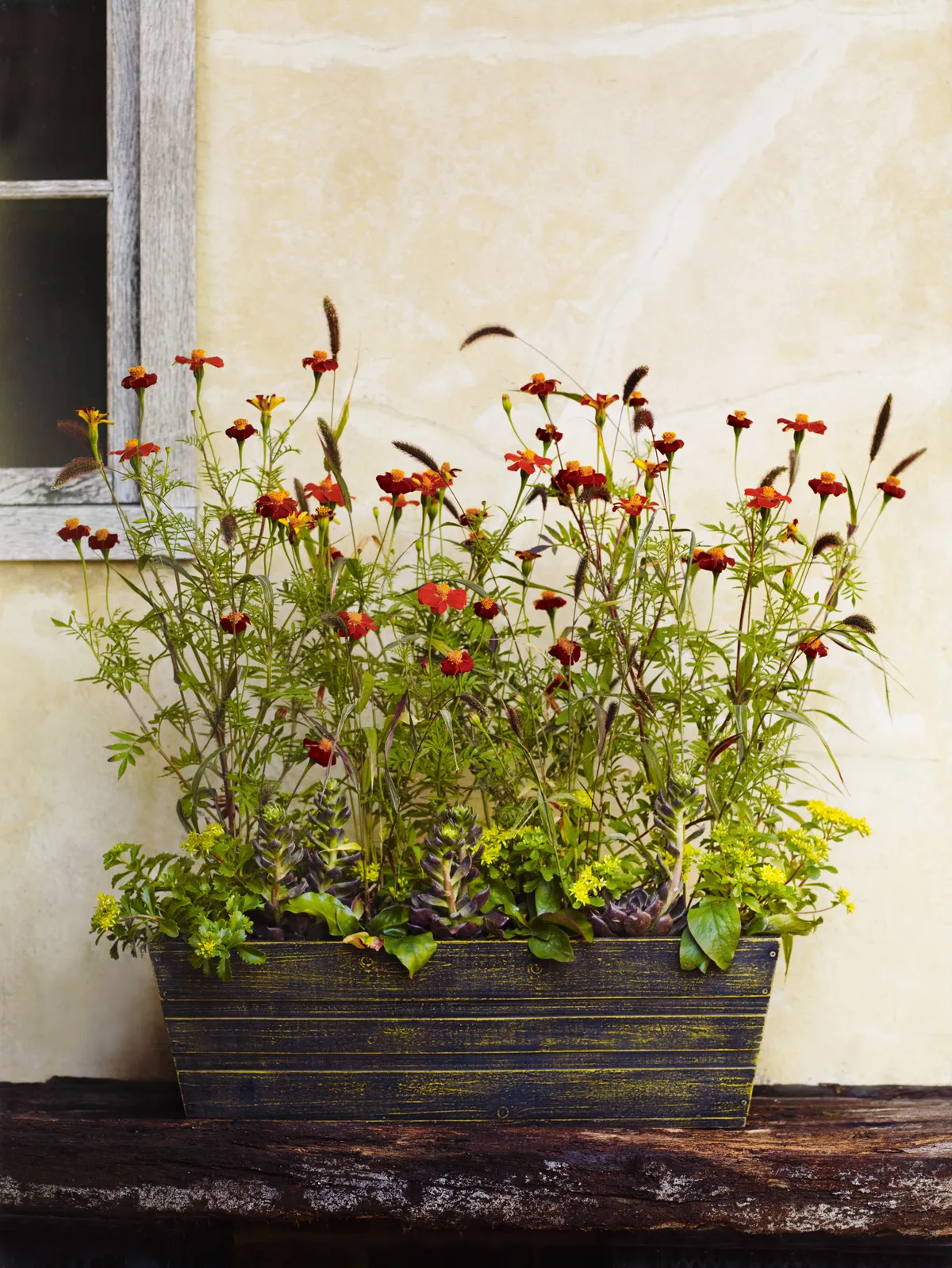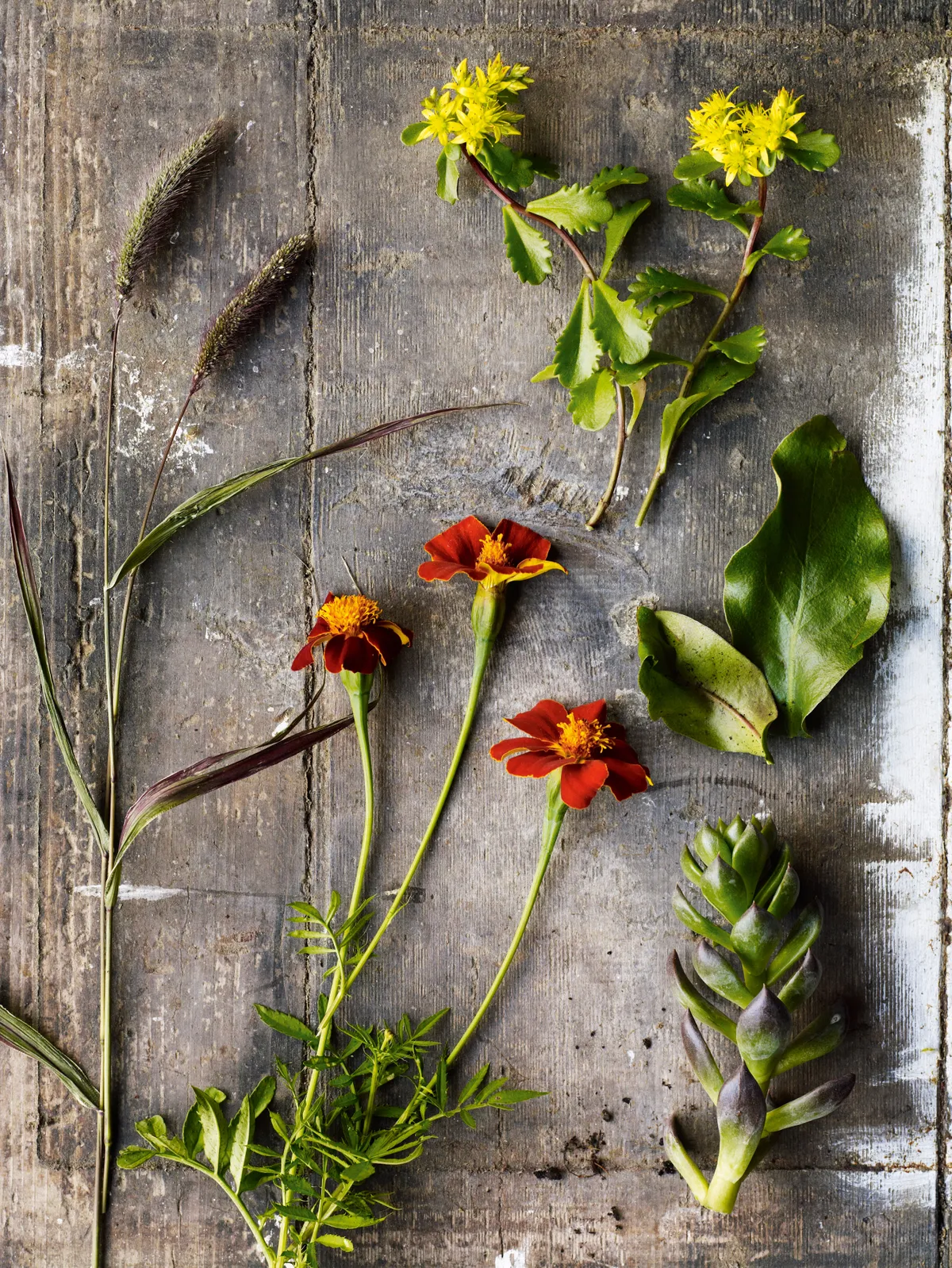Discover how to create these container displays, which will offer colour right through autumn from Benjamin William Pope.
For more of our pots of style, head to our pots page.
Two ideas for autumn container displays
A simple charm
How to achieve the look
Container and composition
The container should be simple in shape and appearance and in scale with the plants. Weathered terracotta, galvanised metal or rusted steel complement the small pelargoniums and offer a semi-natural patina that improves with age. When choosing plants make sure they are compatible in their growing requirements, size and habit. Here the earlier flowering Pelargonium ‘Renate Parsley’ fills the main space with its semi-lateral habit, while Pelargonium ‘Saxifragoides’ trails down the side of the pot, lending a soft informality. Towards the back sits Pelargonium sidoides, more upright than the others, it continues to flower later in the year while catching the light with its small ruffled leaves.
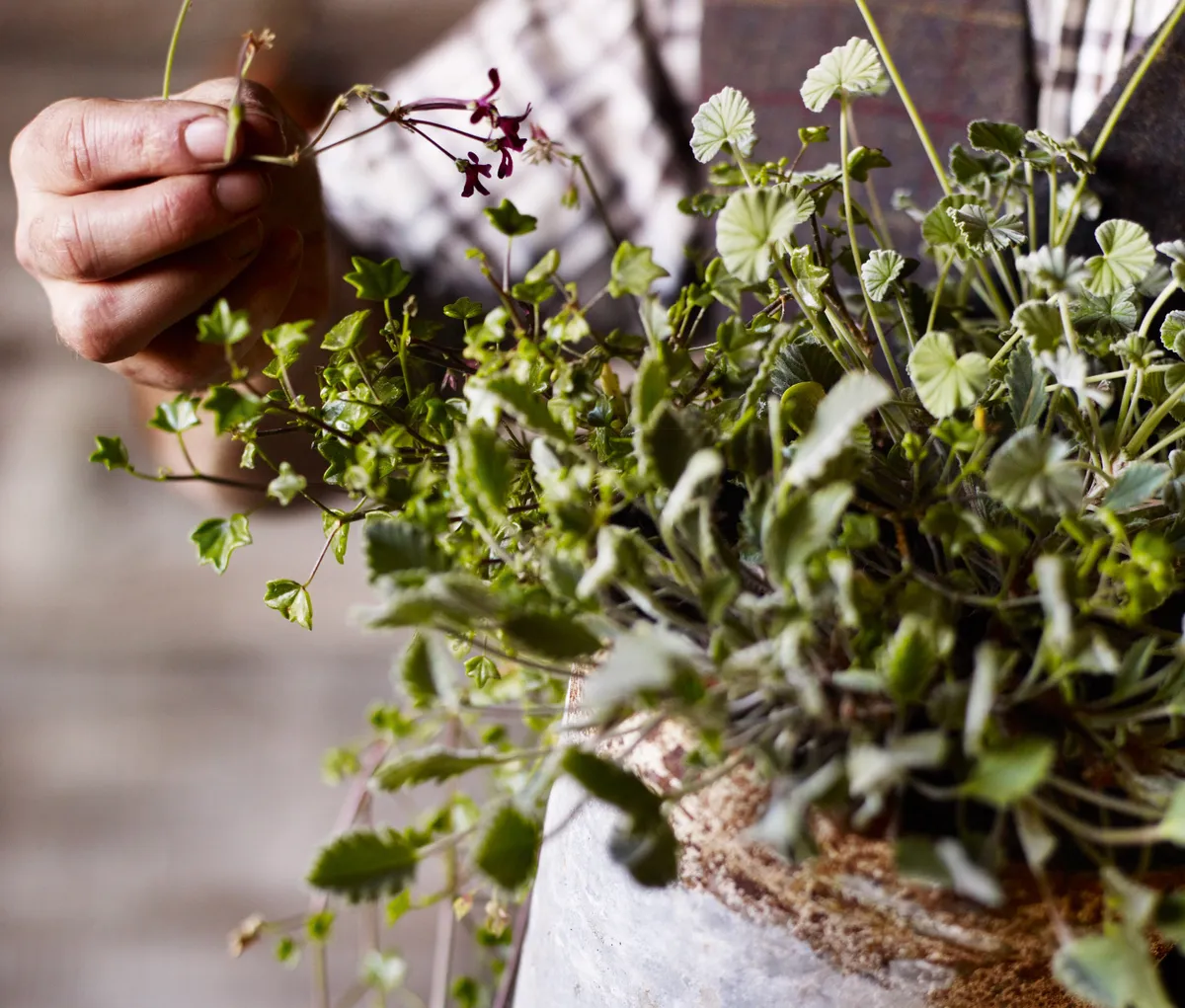
Cultivation and care
Pot up the plants in a good-quality, peat-free potting mix. I would incorporate a handful of loam and grit to the mix to improve compost stability and drainage. Place the pot in a warm, sunny site that is free from frost, and which ideally has a little shade for part of the day. This will help prevent the display from overheating and drying out too quickly. Give a liquid feed every couple of weeks throughout the growing season and deadhead to keep plants looking their best. Take cuttings in midsummer to allow time for rooting, so that your young plants can overwinter successfully in a frost-free environment. The new plants can be used the following year and will perform with renewed vigour.
Plants
- Pelargonium sidoides
A choice species with compact habit and soft, silver leaves that are rounded in shape. 25cm. AGM. RHS H1C, USDA 10a-11b. - Pelargonium ‘Renate Parsley’
A charming species hybrid with small, highly decorative leaves that form a silvery hummock. In summer, bicoloured flowers of blush red and pale pink appear on short stems. 10cm. AGM. RHS H1C. - Pelargonium ‘Saxifragoides’
A delicate species hybrid with tiny, ivy-shaped leaves. Flowers in summer with pink flowers that are typical of the genus.15cm. RHS H1C, USDA 10a-11b.
New beginnings
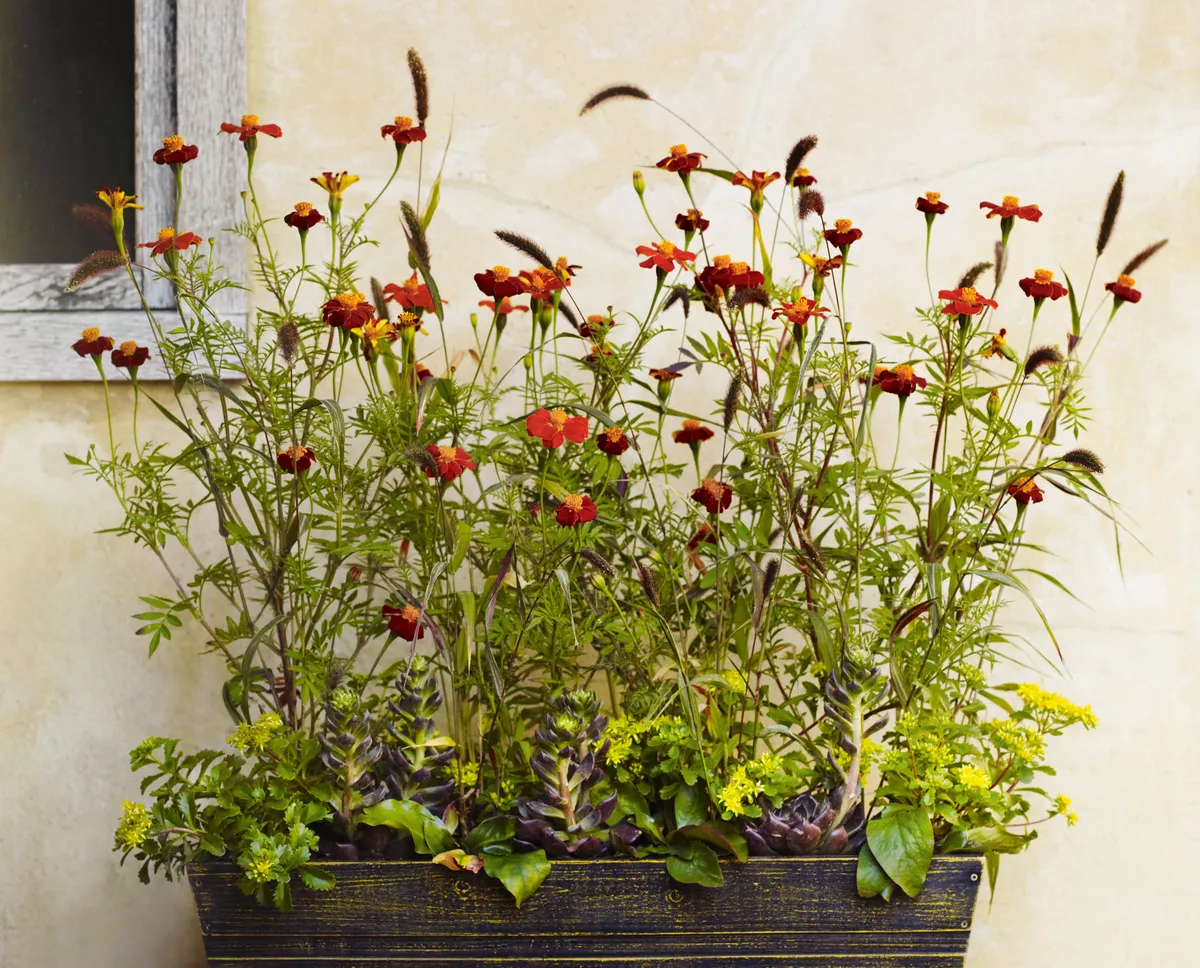
How to achieve the look
Container and composition
Start with the container. Prepare and protect the timber with a light sanding and good primer to increase longevity. Allow it to dry before covering with a coat of yellow and then black paint. When completely dry gently sand again, removing some of the black paint to reveal the contrasting yellow beneath. The planting focuses on warm and bright colours arranged in a relaxed style, which is enhanced by the black and yellow trough. Tagetes ‘Cinnabar’ mixed with Setaria viridis ‘Rubra’ steal the show, while at the base the sedum and echeveria provide additional colour and form. In contrast the relatively large foliage of Limonium platyphyllum helps anchor the open planting and provide substance to the display.
Cultivation and care
To ensure flowering lasts well into autumn, sow the setaria and tagetes in late spring. Prick out the young seedlings and grow on in modules until ready to plant into the container. Place crocks over the drainage holes and, using a soil-based compost that is free draining, informally arrange the taller plants towards the back and shorter plants nearer the front. After planting water to settle and then periodically, depending on weather conditions. No additional feeding is required but deadheading the tagetes will help prolong the flowering. When positioning your container be mindful that setaria self-seeds readily, so choose a terrace or an area with a hard surface to discourage future seedlings.
Plants
- Setaria viridis ‘Rubra’
An annual ornamental grass that is happy in most soils in full sun to part shade. 40cm. RHS H5. - Tagetes ‘Cinnabar’
A half hardy annual that germinates easily from seed. 50cm. RHS H3. - Sedum hybridum ‘Czar’s Gold’ An excellent groundcover with scalloped leaves. 15cm. RHS H6.
- Limonium platyphyllum
A hardy perennial with large, leathery leaves 60cm. RHS H7, USDA 3a-9b. - Echeveria ‘Chocolate’
Succulent with chocolate-coloured leaves that form tight rosettes. 10cm. RHS H2.
